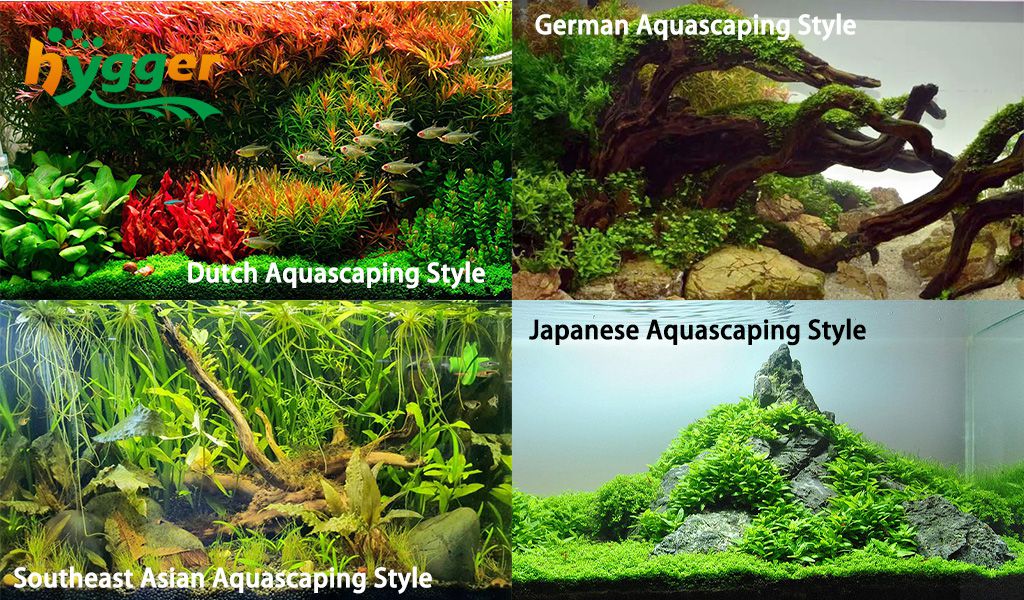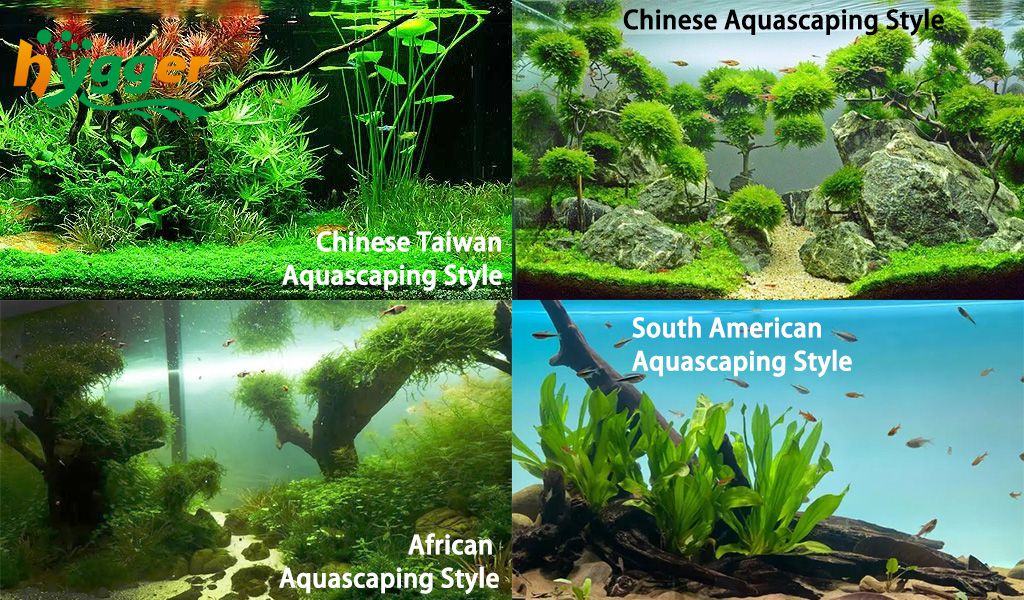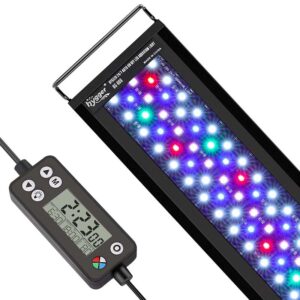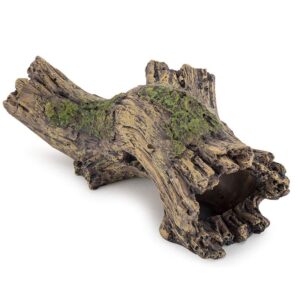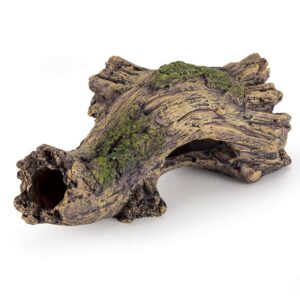Aquascape Aquarium and the Golden Ratio Part One
Aquascape aquarium mimics the natural environment, including the color, light, materials, and other elements. It not only decorates your house but also relaxes people. Sounds not bad, right? However, building a good-looking aquarium may be a little bit hard. Because aquascaping can be an art, which also demands specialized knowledge. In today’s article, we will share something about the golden ratio and have a list of aquascaping styles. Without further delay, let’s dive in.
Content Table
Two perspectives on landscaping
When it comes to aquascape aquariums, a controversial issue should be landscape-oriented or fish-oriented. Generally, there are two schools. One holds aquascape aquariums should be landscape-dominating, while the other supports fish-dominating. The former is ideal for aquariums to keep attractive aquatic plants. Just imagine, a planted tank with some oxygen bubbles, now do you have a picture in your mind? On the contrary, the latter is a great option for fish with high ornamental value, like Arowanas.
The most beautiful golden ratio in aquascape
What is the most beautiful golden ratio? Actually, it is a line-to-segment at a ratio of 1:1.618. Then is there an application of the golden ratio in aquascaping? Exactly the brief and definitive answer is yes. For instance, the Dutch Aquascaping Style. Generally, the small plants should be placed in the front of the aquarium, while the larger ones can be placed at the back of your fish tank.
Aquascaping styles
In general, there are diverse aquascaping styles, including:
1. The Dutch Aquascaping Style
2. The German Aquascaping Style
3. The Southeast Asian Aquascaping Style
4. The Japanese Aquascaping Style
5. The Chinese Taiwan Aquascaping Style
6. The Chinese Aquascaping Style
7. The African Aquascaping Style
8. The South American Aquascaping Style
9. The Terraqueous Plants Aquascaping Style
10. The Marsh and Plants Aquascaping Style
11. The Clump-shaped Plants Aquascaping Style
12. The Vivarium Aquascaping Style
13. The Cichlid Fish Aquascaping Style
14. The Stream Aquascaping Style
15. The nature Aquascaping Style
16. The Saltwater Aquarium Aquascaping Style
17. The Reptilian Pets Aquascaping Style
18. The Hardscape Only Aquascaping Style
Next in this segment, we will share the first 8 aquascaping styles.
1. The Dutch Aquascaping Style
The Dutch aquascaping style is of great antiquity for planted aquariums. Its focus is on the placement of aquatic plants. Intricate placement, diverse shapes, and multicolored colors of aquatic plants will create an in-depth perspective. Commonly, red or larger aquatic plants are the focal points for Dutch-style aquariums. And the aquarium is always famous for being closed with an aquarium lid, dense plants, and tropical fish in tanks. As a result, to build the Dutch-style aquarium, you should have a deeper understanding of aquatic plants. For example, skills to plant, group, and combine.
2. The German Aquascaping Style
The German aquascaping style pursues the beauty of nature. Commonly, you should not add an aquarium lid to the German-style aquarium. Then, you can observe the aquatic plants from different angles, like the bottom or water surface. Aside from that, a German aquascaping-style aquarium creates a comfortable living environment, that mimics the water quality, soil, climate, or other elements of the origins.
3. The Southeast Asian Aquascaping Style
Based upon the Menam River, the Southeast Asian style aquarium features aquatic plants, especially those from Southeast Asia, like Cryptocoryne. Also, plants are used to create marsh. Additionally, fish from the Cyprinidae family are available, like Harlequin Rasbora.
4. The Japanese Aquascaping Style
The Japanese aquascaping style is endowed with ideology. Accordingly, the Japanese aquascaping style is classified as a philosophical one. On the other side, the Japanese aquascaping style is also influenced by its characteristic garden design. In general, stones are the main element in the aquarium, which is strict to the shape, texture, and color of stones. Besides that, the aquarium layout is small and exquisite.
For instance, Iwagumi, a Japanese aquascaping style. Iwagumi is developed by an aquarist around 1985, named Takashi Amano. And the Iwagumi layout is minimalist. Generally, only one or two types of aquatic plants are applied, which are always the slow-growing ones. Nevertheless, your aquarium may face algae thriving issues.
5. The Chinese Taiwan Aquascaping Style
The Chinese Taiwan aquascaping style can be a combination of various aquascaping styles. Aquatic plants that are hard to keep in aquariums are always the first choice. Hence, building the Chinese Taiwan-style aquarium requires sophisticated skills in aquascaping and experienced maintenance of aquatic plants.
6. The Chinese Aquascaping Style
Influenced by the “benevolence” of Confucianism, the “Harmony between nature and humans” of Taoism, and Chinese poetry, the Chinese aquasacping is attractive, gorgeous, and picturesque.
7. The African Aquascaping Style
The African aquascaping is based on Lake Tanganyika. You can use a schist or other shape of rocks to build a “cliff” in your tank. Also, you can embellish the bottom of rocks with some stones, like pebbles. Furthermore, the African-style tank always contains aquatic plants or fish that are native to Africa.
8. The South American Aquascaping Style
The South American-style aquarium mimics the natural environment of the Amazon River basin. Generally, the South American-style aquarium includes plants, fish, wood, and other aquarium decorations. You can add pieces of wood, and then decorate them with moss. Moreover, fish like Angelfish and other tetra fish from the Characidae family.
To be continued
After reading, which aquascaping style do you favor most? Actually, if you are a beginner, the Iwagumi aquascaping style is an excellent alternative. Or if you want to set up a tropical-theme aquarium, you should add driftwood, and monitor the water parameters, like the pH and KH levels.
By the way, you can go to Tips for Building A Giant Planted Aquarium to learn more about the great aquascape layout.
As for how to choose suitable plants and rocks for your aquarium, you can read Good Choices from Plants to Rocks for Aquascape. Also, for more aquascaping styles, please stay tuned to Aquascape Aquarium and the Golden Ratio Part Two. That’s it. Finally, thanks for your reading.

